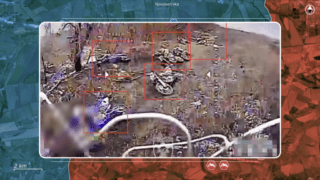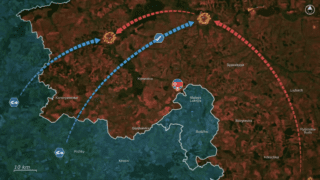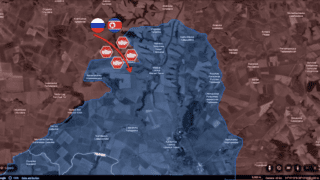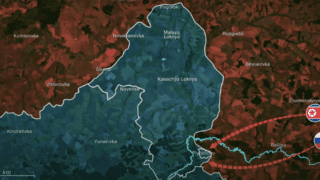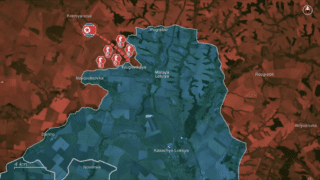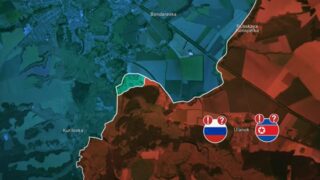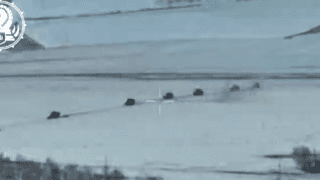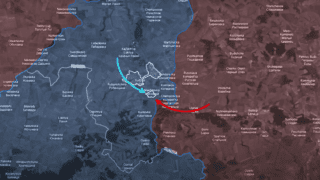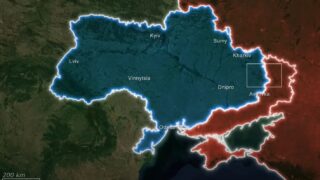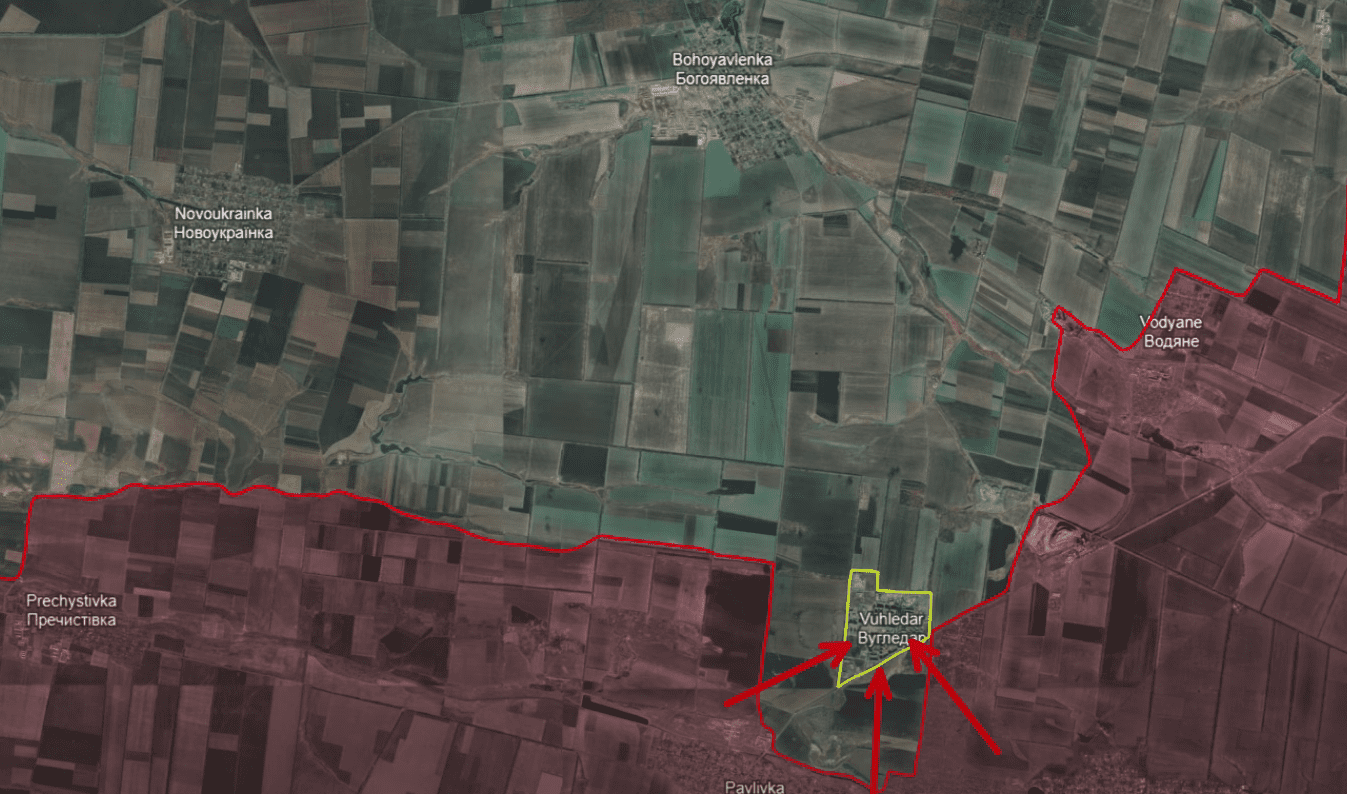
Frontline report: Russian forces take Vuhledar after two-year siege
Day 959
On 9 October, the biggest developments come from the Vuhledar direction. Here, Russians tried desperately to fully close their encirclement and capture the entire Ukrainian contingent in Vuhledar but were forced to engage in intense urban fighting and go through the town instead of around it.
Ukrainians also set up a new line of defense, leaving Russians stuck in the soon-to-arrive autumn mud after their bitter victory.
As Russians had crossed the river from the west and advanced on Vuladar’s eastern flanks from Bodani, Russians were close to taking the town into complete encirclement, trapping Ukrainian forces inside. Russians were targeting the only Ukrainian supply lines into the city with drones and artillery strikes as well, severely deteriorating the situation for Ukrainian defenders.

The only options left for Ukrainians were either to push Russians out of Vuladar’s flanks and reestablish ground lines of communication with the town or for the Ukrainian 72nd Mechanized Brigade to conduct a withdrawal.
Pushing Russian forces out of their attempted encirclement of Vuhledar was a significant challenge for Ukraine. The Ukrainian brigades on Vuladar’s flanks were largely unmechanized, lacking the necessary firepower to launch a direct assault on Russian positions. Western weapon deliveries were limited and needed to be prioritized for other areas of the front, and Ukraine couldn’t divert mechanized units from those sectors to reinforce Vuhledar.
Ukrainian soldiers reported that Russian Spetsnaz forces and specialized drone units supported the infantry assaults on Vuhledar, attacking from three sides and maintaining constant artillery fire. With compromised supply lines and increasing pressure, the Ukrainians’ only option was to withdraw from the town.
They prioritized saving the veteran 72nd Mechanized Brigade over holding Vuhledar, which had already been reduced to ruins. The Ukrainian rifle brigades and flank battalions, skilled in defensive operations, were assigned to hold the line against Russian forces attempting to encircle Vuhledar fully.
If we look at the topographic map, we can see that the Russians had to cross multiple gullies, lowlands, and rivers to complete the encirclement.

Meanwhile, the Ukrainians held the high ground on the opposing hill ridges, giving them an advantage in repelling Russian attacks. They also maintained control over the western part of coal mine number three to prevent the Russians from advancing along the ridge toward Bohoyavlanka, which would have jeopardized the rescue operation.
Ukrainians released numerous videos showing their successful defense against Russian mechanized attacks on Vuhledar’s eastern flanks, where they destroyed many Russian infantry fighting vehicles using FPV drones.

One video showed a Russian BMP-2 infantry fighting vehicle attempting to assault Ukrainian positions on the western flank. Ukrainian forces responded with their BMP-2, opening fire and killing the Russian crew. The footage concludes with Ukrainian soldiers capturing the Russian vehicle and driving it back to their lines, waving a Ukrainian flag to avoid being mistaken for the enemy.
As Ukrainians retreated from Vuhledar, Russian drone footage showed them targeting Ukrainian vehicles used in the evacuation. However, most strikes were on stationary targets, suggesting Ukrainian troops had already evacuated into the tree lines. When the footage showed strikes on moving Ukrainian vehicles, it pixelated and cut out before impact, indicating Ukrainians were using electronic warfare to disrupt Russian drone attacks. Russians also targeted Ukrainian evacuation roads with nighttime artillery barrages, attempting to hit troops moving undetected through the tree lines.
Despite these efforts, Russians could not fully encircle Vuhledar due to strong Ukrainian resistance on the flanks and the logistical challenge of having their nearest supply hubs 18 to 30 km away with no hardened roads for easier access.

By 1 October, it was evident that Ukrainian forces had completed their withdrawal from Vuhledar. Russians quickly moved in, posting numerous videos of raising Russian and Soviet flags on the town’s buildings.
In response, the Ukrainian 72nd Mechanized Brigade, which had defended Vuhledar for nearly two years, addressed the Russian 155th Naval Infantry Brigade, reconstituted over eight times due to severe losses in repeated assaults on Vuhledar. The Ukrainian Brigade then released a three-part video showing how they continued repelling the Russian brigade’s frontal assaults even as they organized their own retreat, diminishing the Russian victory.
At the time, many Russian analysts were skeptical that capturing Vuladar would lead to a larger operational breakthrough or cause Ukrainian defenses to collapse. Ukrainian forces had a solid defensive line behind Vuhledar, positioned between Novoukrainka and Bohoyavlenka, which provided similar geographic advantages that had made Vuhledar a stronghold.

Only dirt roads and fields intersected by gullies, rivers, and lowlands also lead toward the next Ukrainian defensive line. These areas would soon become mud terrain with the coming rainy season, complicating Russian advances.
With the Ukrainians holding the high ground, Russians would face significant challenges moving through the lowlands and mud.

The Institute for the Study of War also pointed out that it would take time for Russians to fully clear and repurpose Vuhledar as a supply hub, meaning that Russians would have to rely on overstretched supply lines for now.
Ultimately, the battle for Vuhledar did not result in the decisive breakthrough for the Russian forces they had likely hoped for. Despite their efforts to fully encircle and capture the town, Ukrainian troops executed a strategic withdrawal, prioritizing the survival of their forces over holding ground already devastated by combat.
While the Russians ultimately claimed victory, raising their flags over Vuhledar, the cost to them was immense. Russian brigades like the 155th Naval Infantry suffered severe losses, having to be reconstituted multiple times throughout many failed attempts to take the city in the last two years.
Meanwhile, Ukrainian defenses remain strong further in the west, with new defense lines positioned on high ground. This will give them a continued advantage as the terrain becomes increasingly difficult to cross with the approaching autumn rains.
Finally, the 72nd Mechanized Brigade themselves stated that while the line of defense has changed, the work has not, as they continue to share footage of them repulsing Russian attempts to advance toward the next line of defense.
In our daily frontline report, we pair up with the military blogger Reporting from Ukraine to keep you informed about what is happening on the battlefield in the Russo-Ukrainian war.
Read also:
- Frontline report: Ukraine ignites Russian strategic bases, flames span from Crimea to Urals




